VANCOUVER — Explorers often opine on district-scale discovery potential. But when it comes to Auryn Resources (TSXV: AUG) same claim for its massive land position on the Committee Bay gold belt in Nunavut, the company’s collection of strong financial and scientific minds make it seem more than self-serving speculation.
On the financial side are president and CEO Shawn Wallace and executive chairman Ivan Bebek, who cofounded Cayden Resources and discovered the El Barqueno gold asset, which encompasses 410 sq. km in the Guachinango gold district in Jalisco state, Mexico. Agnico Eagle Mines (TSX: AEM; NYSE: AEM) scooped up the junior in 2014 for $205 million.
Meanwhile, Auryn’s technical roster has a long list of Newmont Mining (NYSE: NEM) alumni led by former global structural geologist, and Auryn’s current chief operating officer, Michael Henrichsen.
Auryn conducted extensive due diligence on gold projects over two years before paying $20 million in shares for North Country Gold and Committee Bay in mid-2015.

Nunavut regional mine and exploration map. Credit: Auryn Resources.
The project straddles an Archean-aged greenstone belt within the Western Churchill geological province. The theory behind the district play involves a geological analogy between Committee Bay and gold-bearing greenstones, 180 km southwest at Agnico’s Meadowbank mine and nearby Amaruq discovery.
North Country had outlined a resource-stage deposit at Committee Bay’s Three Bluffs area, totalling 4.3 million indicated tonnes grading 4.91 grams gold per tonne for 683,000 contained oz. gold, and 5.5 million inferred tonnes at 5.43 grams gold for 965,000 contained oz. gold.
The deposit features a “high-grade subset” with 1.9 million indicated tonnes of 8.42 grams gold for 501,729 contained oz., and 3.4 million inferred tonnes at 7.16 grams gold for 772,179 contained oz. The resource calculations use a 3.5-gram-gold cut-off grade.
“When you look at the centre mass of what’s been defined at Three Bluffs, there’s already over 1 million oz. there, but it’s the discovery potential across the greater property package that had us really excited when we got our hands on the data,” Henrichsen says during an interview in Vancouver.
“From my global perspective and my days at Newmont — when we used to district-hunt worldwide — the project has the signs we would hope to find. Our technical team is deep and we can handle a district of this scale like a major. Except we’re nimble, and we’re fast,” he adds.
Auryn’s team has spent the past six months fine-tuning its structural model for gold occurrences on the property package.
The company initially acquired 587 sq. km, but after its field and data work, opted to consolidate the position and boost its land holdings 270% to 2,152 sq. km.
“We essentially reconsolidated the belt last year through staking,” Wallace says. “The property package was initially all together, but some of the claims had lapsed … as we put our technical work into the project, we saw a lot of pieces we wouldn’t have let go, and I knew if we were going to run around telling people we had this potential district, we had better have the rights to the whole thing.”
The first issue Auryn had to tackle was a plethora of sparsely drilled prospects that stretch across a 300 km mineralized belt. Previous drilling had cut flashy intercepts — including 10.86 grams gold over 19.4 metres at the northern Inuk target and 10.47 grams gold over 12 metres at the southern West Plain target — but most of the prospects only had between six and 10 drill holes of data.

Drill crews at work on the Committee Bay land package. Credit: Auryn Resources.

Heavy equipment at the Committee Bay camp. Credit: Auryn Resources.
So Henrichsen and his team brainstormed, and conducted what he calls a “prospectivity analysis” — or breaking the huge Committee Bay land position into prioritized pieces that could be explored better.
Auryn combined lithology distributions and fluid pathway models to rate and rank factors for economic gold deposits. This helps delineate belt-wide targets and narrow exploration focus to 1% of the land package. The concept is especially important, since 95% of the Committee Bay belt is covered by glacial till.
“The historic till sampling has been all over the shop, and not very repeatable. So we tilled the southwest part of the belt last year and found the Anuri corridor, which had the most elevated gold-in-till values on the property,” Henrichsen says.
“We overlay the till sampling on our previous work, and we’re even closer. That’s the discipline that gets you to discovery quickly. If we take that Anuri anomaly and throw it on a magnetics background, a couple of pretty awesome details emerge … it definitely looks like it will expand south, but perhaps more importantly is that it’s one of the strongest geochemical signatures uncovered on the overall belt,” he says.

The newly-expanded Anuri corridor geochemical and magnetic results. Credit: Auryn Resources.
Anuri sits along a 20 km shear structure that Auryn suspects could bear gold, based on its interpretation of glacial ice flows and corresponding geophysics. Within this anomaly is a previously discovered, high-grade boulder train that has returned rock samples of up to nearly 290 grams gold.
The company is tackling 5 km of related structure at Anuri with a remote-controlled rotary air blast drill (RAB) rig that covers 1 km without helicopter support. It cuts per-metre drill costs by between 65% and 75%.
Late last year Auryn completed 3,000 metres of RAB drilling, mostly on the previously identified West Plains prospect in Committee Bay’s southwest region. Highlights from the program include: 16.8 metres of 10.36 grams gold from 61 metres deep in hole 1; and 27 metres of 2.97 grams gold from surface in hole 27.
The company plans to use the RAB rig at Anuri in the coming months to drill 10,000 metres.
“You have to consider everything in context when coming up with the strategy for a project like Committee Bay,” Wallace says. “If it was six years ago and market conditions were better, I’d say we would hit it a lot harder, because that’s what our group is wired to do.
“Now is a time to work on increasing our scientific knowledge, but it’s also a time where you have to watch your capital structure. In a market like this the biggest value driver is finding gold. Let’s face it: there are a million juniors out there doing small step-outs and adding incremental ounces, but we’re explorers first and foremost, and that means discoveries.”
Auryn hasn’t forgotten about Three Bluffs and the ounces in the ground, however, with geochemical and geophysical work hinting at more upside.
Rock and till sampling across a 30-by-20-km area identified four “multi-kilometre-long trends of gold mineralization surrounding the deposit,” while a reinversion of induced-polarization (IP) and magnetic geophysical surveys shows the host structure continues 5 km east.
“Three Bluffs really represents our ‘bird in hand,’ but we feel there’s material expansion potential there,” Henrichsen says.

The Three Bluffs “playing field” at Committee Bay. Credit: Auryn Resources.
“The western part of the deposit is the most lightly drilled, and that’s where we did the reinversion of the IP anomalies. The current resource could become world-class unto itself — with the game-changers we’ve discovered since acquiring the property — but I’m also excited about what I call the ‘Three Bluffs playing field.’”
Auryn is working to close a bought-deal offering that could bring in as much as $15 million if over-allotment options are exercised. The company had intended to raise $8 million, but increased the financing to include 4.1 million flow-through shares at $1.89 per share, and 3.7 million non-flow-through shares at $1.40 per share.
Auryn has traded in a 52-week range of 73¢ to $1.75 per share, and jumped 61¢ to start the year, en route to a $1.70-per-share close at press time. The company has 49 million shares outstanding for an $83.7-million market capitalization, and would have $16 million in its treasury with the proceeds of the financing.
“The gold market is definitely improving, and you’ve seen some of the major companies gaining ground,” Wallace says. “You’re still not seeing that sort of generalist investment money getting aggressive on the industry, but the more experienced gold investor is participating right now. That’s one reason we’ve done so well with the Committee Bay story, and the other is that Nunavut has gotten a lot of interest, due to some of the major projects and discoveries happening in the jurisdiction.”

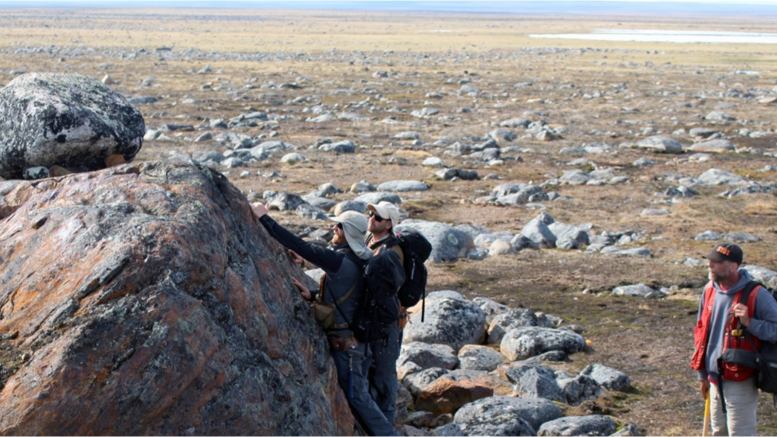
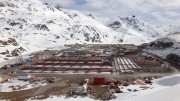
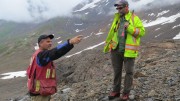
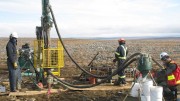
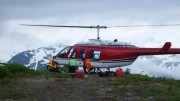
Be the first to comment on "Auryn touts ‘district-scale’ potential at Committee Bay"